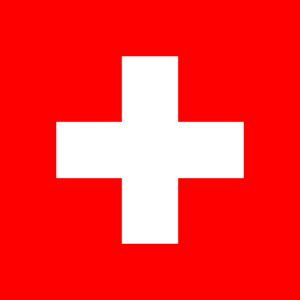History of Switzerland:
Switzerland was originally inhabited by the Celts. In the 1st century BC Rome conquered the country and Switzerland was a Roman province for 500 years. The region prospered under Roman rule as roads were built between major cities, allowing trade and commerce to grow.
In 800, the Frankish Empire, led by Charlemagne, ruled Switzerland. The country was for many years part of the Holy Roman Empire. In 1291, the Unterwalden, Schwyz and Uri families signed a document declaring Switzerland an independent state. Formal independence from the Holy Roman Empire was not achieved until 1499.
Switzerland’s goal was to become a neutral country and not participate in any wars. However, in 1797 Napoleon invaded the country. However, after Napoleon’s defeat, the Congress of Vienna in 1815 gave Switzerland the status of permanent armed neutrality. Despite its central location, Switzerland was able to remain neutral during both the World Wars and the Cold War.
Information about Switzerland:
| Capital | Bern |
| Population | 8,806,092 (Source: 2023 worldometer) |
| Major Cities | Bern (capital), Zürich, Geneva, Basel, Lausanne, Lugano, St. Gallen, Interlaken |
| Borders | west by France, north by Germany, east by Austria and Liechtenstein, and south by Italy |
| Gross Domestic Product (GDP) | $807,706,000,000 (2022 worldometer) |
| Currency | Swiss franc (CHF) |
Flag of Switzerland:
Switzerland Economy Key Industries:
Switzerland Major Industries: machinery, chemicals, watches, textiles, precision instruments
Switzerland Agricultural Products: grains, fruits, vegetables; meat, eggs
Switzerland Natural Resources: hydropower potential, timber, salt
Switzerland Major Exports: machinery, chemicals, metals, watches, agricultural products
Switzerland Major Imports: machinery chemicals, vehicles, metals; agricultural products, textiles
The Geography of Switzerland:
Total Size of Switzerland: 41,285 km²
Geographical Low Point of Switzerland: Lake Maggiore 195 m
Geographical High Point of Switzerland: Dufourspitze 4,634 m
Climate of Switzerland: Temperate, but varies with altitude; cold, cloudy, rainy/snowy winters; cool to warm, cloudy, humid summers with occasional showers
General Terrain of Switzerland: mostly mountains (Alps in south, Jura in northwest) with a central plateau of rolling hills, plains, and large lakes
World Region or Continent of Switzerland: Europe
Geographical Coordinates: 47 00 N, 8 00 E
The People of Switzerland & Culture
Switzerland Government Type: formally a confederation, but similar in structure to a federal republic
Switzerland Nationality: Swiss (singular and plural)
Switzerland National Holiday: Founding of the Swiss Confederation, 1 August (1291)
Switzerland Independence: 1 August 1291 (founding of the Swiss Confederation)
Switzerland National Symbol: Swiss cross (white cross on red field; arms equal length)
Switzerland National Anthem or Song: Schweizerpsalm [German] Cantique Suisse [French] Salmo svizzero, [Italian] Psalm svizzer [Romansch] (Swiss Psalm)
Switzerland Languages Spoken: German (official) 63.7%, French (official) 20.4%, Italian (official) 6.5%, Serbo-Croatian 1.5%, Albanian 1.3%, Portuguese 1.2%, Spanish 1.1%, English 1%, Romansch 0.5%, other 2.8% (2000 census)
Switzerland Religions: Roman Catholic 41.8%, Protestant 35.3%, Orthodox 1.8%, other Christian 0.4%, Muslim 4.3%, other 1%, unspecified 4.3%, none 11.1% (2000 census)
Interesting Facts about Switzerland:
This is a well-known fact about Switzerland. It is neutral in many ways. Not only did Switzerland participate in neither World War I nor World War II, it still prefers to stay aloof when it comes to political affiliations and conflicts.
Switzerland is famously neutral, a policy that dates back to the Treaty of Paris in 1815. Since then, it has maintained a policy of non-participation in armed conflict and serves peacebuilding processes around the world. One of two countries in the world with square flags. The Swiss flag is one of only two square sovereign national flags. The other is the Vatican City flag. The bars of the Swiss flag have a ratio of 7:6:7 (vertical) and 6:7:6 (horizontal), with the bars shorter than the arms.
Swiss means that wealthy people with money they want to hide from tax authorities, spouses and others choose Swiss banks to do so. Because if your money is safely held in a Swiss bank, you can be sure that your information will never be passed on to a third party who asks for it.
There are more banks than dentists in Switzerland, which is a bit strange. Even Swiss bankers are protected by bulletproof glass!
Switzerland is well-prepared for all kinds of nuclear disasters, as it can accommodate its entire population in nuclear shelters if necessary. The world’s largest nuclear shelter, the Sonnenberg Tunnel, which can hold 20,000 people for a long period of time, is located in Switzerland.
A luxury watch from a Swiss watchmaker. Half of the luxury watch brands such as Tissot, Tag Heuer, Rolex, Patek Philippe and Longines are all made in Switzerland.
Kudos to the Swiss watchmakers for bringing to watchmaking an art form that people pay hundreds of thousands of dollars for. Here are some interesting facts about Swiss watchmaking. The first waterproof watch was invented by Swiss Rolex in his 1927.



